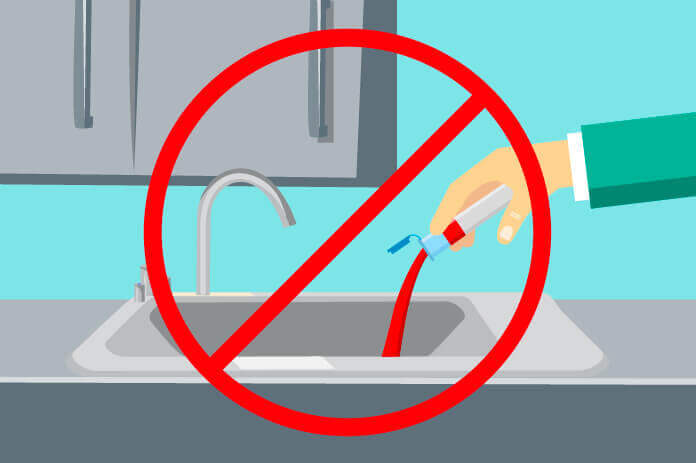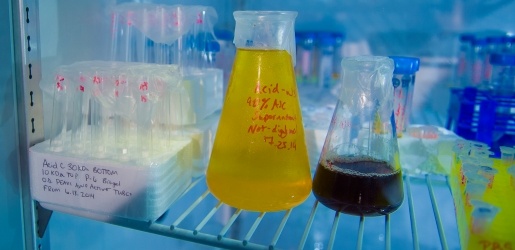Specialist Liquid Waste Removal Melbourne: Rapid and Budget-friendly Solutions
Specialist Liquid Waste Removal Melbourne: Rapid and Budget-friendly Solutions
Blog Article
How Liquid Waste Disposal Works: A Comprehensive Introduction of Methods and Technologies Employed

Summary of Liquid Waste Types
The complexity of liquid waste types necessitates an extensive understanding of their qualities and implications for disposal. Liquid waste can generally be classified right into numerous types, including commercial, local, agricultural, and dangerous waste. Each group displays distinct residential properties, calling for specific management approaches to reduce ecological and health and wellness threats.
Industrial fluid waste originates from manufacturing processes and typically consists of a series of impurities, such as heavy steels, solvents, and organic substances. Community fluid waste, primarily making up wastewater from houses and commercial facilities, consists of raw material, nutrients, and pathogens (industrial wastewater treatment). Agricultural fluid waste, consisting of overflow from ranches, might consist of plant foods, pesticides, and pet waste, presenting threats to water quality and communities
Dangerous liquid waste is characterized by its toxicity, reactivity, or prospective to cause damage. This category includes materials like acids, bases, and particular chemicals that necessitate strict handling and disposal methods. Recognizing these varied liquid waste types is essential for establishing reliable disposal approaches and making sure conformity with environmental regulations. Proper category and characterization are vital for carrying out proper treatment methods and lessening the negative effect on public health and the setting.
Physical Treatment Techniques

Testing is the preliminary action, where larger particles and debris are gotten rid of from the fluid waste using displays or grates. In sedimentation containers, heavier bits resolve at the bottom, creating a sludge layer, while the made clear liquid can be additional dealt with.
Filtering is an additional vital technique that includes passing the liquid with permeable products, such as sand or membranes, to capture smaller bits. This step enhances the top quality of the liquid, making it appropriate for succeeding treatment processes.

Chemical Treatment Techniques
Chemical therapy strategies are important for effectively handling fluid waste, specifically in dealing with dissolved and colloidal contaminants that physical methods may not properly eliminate. These strategies utilize different chemical representatives to counteract, precipitate, or transform hazardous materials right into much less harmful types.
One usual technique is coagulation and flocculation, where chemicals such as alum or ferric chloride are included in advertise the aggregation of put on hold particles. This procedure improves sedimentation, allowing for less complicated removal of the resulting sludge. Furthermore, oxidation processes, using representatives like chlorine or ozone, are employed to break down intricate natural compounds and microorganisms, providing the waste safer for discharge or additional therapy.
Neutralization is one more vital technique, which readjusts the pH of acidic or alkaline waste streams to neutral More Info levels, avoiding possible injury to downstream systems and the atmosphere. Furthermore, progressed oxidation procedures (AOPs) utilize combinations of oxidants and ultraviolet light to break down relentless contaminants, attaining a greater level of treatment efficiency.
Organic Therapy Procedures
Biological treatment procedures play a vital function in the management of liquid waste by making use of bacteria to disintegrate raw material and decrease impurity levels. These procedures can be generally categorized into anaerobic and cardio treatments, each employing specific microbial communities to accomplish reliable waste deterioration.
Aerobic therapy entails the usage of oxygen to facilitate the malfunction of organic products by bacteria. This process is commonly applied in triggered sludge systems, where aeration containers offer a conducive setting for microbial growth, leading to the oxidation of natural pollutants. The resultant biomass can be separated from dealt with effluent through sedimentation.
In contrast, anaerobic treatment occurs in the lack of oxygen, counting on different germs to break down raw material. This approach is especially beneficial for high-strength waste, as it creates biogas, a renewable resource resource, while minimizing sludge manufacturing. Technologies such as anaerobic digesters are regularly utilized in commercial and metropolitan applications.
Both cardio and anaerobic organic therapies not just decrease the environmental impact of liquid waste however also help with resource recovery, making them necessary elements of lasting waste management techniques. Their versatility, performance, and performance sustain their prevalent application across different fields.
Arising Technologies in Disposal
Ingenious approaches to liquid waste disposal are quickly evolving, driven by innovations in modern technology and a raising focus on sustainability. Amongst these arising technologies, membrane bioreactors (MBRs) have gained grip for their capability to integrate organic treatment with membrane layer filtering, resulting in top quality effluent that can be recycled in numerous applications. MBRs enable smaller footprints and more reliable procedures compared to conventional systems.
An additional encouraging advancement is the usage of anaerobic food digestion integrated with nutrient recuperation modern technologies, which not just deals with liquid waste but sites likewise generates biogas and recovers important nutrients like nitrogen and phosphorus. This dual advantage boosts resource effectiveness and lowers environmental impact.
Additionally, progressed oxidation procedures (AOPs) are being embraced for the deterioration of complex natural contaminants. These methods utilize effective oxidants and drivers to break down contaminants at the molecular degree, providing an extremely effective service for challenging waste streams.
Additionally, the assimilation of fabricated knowledge and equipment learning in waste administration systems is maximizing operational efficiency and anticipating maintenance, bring about decreased costs and boosted environmental conformity. These innovations mirror a substantial change in the direction of more lasting and effective fluid garbage disposal techniques.
Final Thought
In final thought, effective fluid garbage disposal necessitates a comprehensive understanding of various methods and modern technologies. The integration of physical, chemical, and biological treatment methods makes sure the effective administration visit here of varied waste kinds. Additionally, the development of innovative technologies improves therapy efficiency and promotes sustainability in waste management methods. By continuously advancing these techniques, it comes to be feasible to address the growing obstacles associated with fluid waste, eventually adding to environmental management and source recuperation.
Fluid waste disposal is a critical aspect of ecological management, requiring a thorough understanding of different strategies and technologies customized to various waste kinds. Liquid waste can extensively be categorized into numerous types, consisting of industrial, metropolitan, agricultural, and hazardous waste. Agricultural liquid waste, consisting of drainage from ranches, may contain plant foods, pesticides, and pet waste, presenting risks to water high quality and communities.
Different physical treatment methods play a crucial duty in managing fluid waste efficiently - industrial wastewater treatment.In final thought, reliable liquid waste disposal necessitates a detailed understanding of numerous strategies and technologies
Report this page